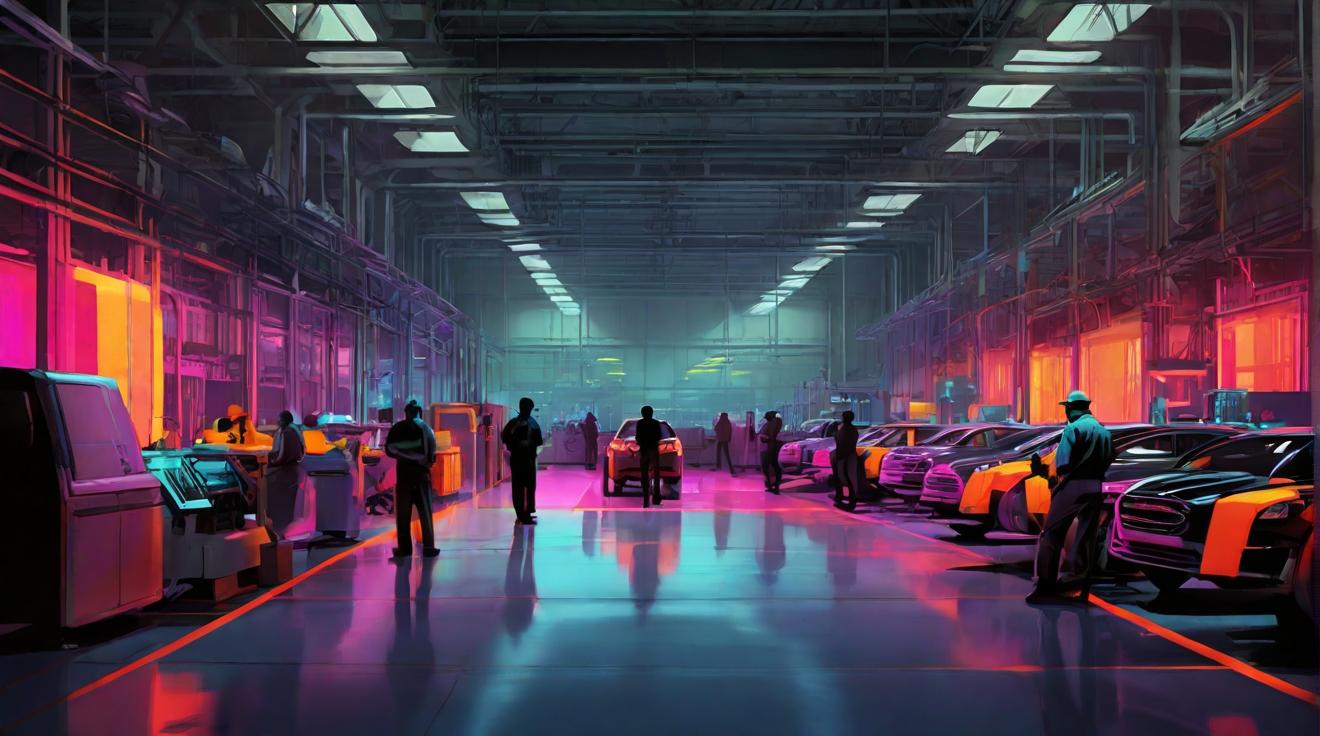Ford Rethinks Vehicle Production in Wake of Autoworkers Strike
In a significant development that rocked the automotive industry, Ford's CEO, Jim Farley, has made a groundbreaking statement that has reverberated across the sector. Addressing the Wolfe Research Global Auto Conference in New York, Farley revealed that the contentious Autoworkers' strike last fall has precipitated a seismic shift in Ford's approach towards vehicle manufacturing, signaling a pivotal moment that might redefine the company's manufacturing footprint.
Union Strikes Prompt Cost Rethinking
Last year, the United Auto Workers’ (UAW) strike inflicted a notable disruption on Ford’s operations, particularly impacting its profitable factory in Louisville, Kentucky. This incident marked the first time Ford faced a strike since the 1970s, a move that Farley acknowledged as a watershed moment for the company. The strike led to robust wage gains for workers, culminating in a contract that introduces a 33% salary increase, pushing the top wage to around $42 per hour by 2028. This development, according to Farley, has compelled Ford to "think carefully" about where to build its future vehicles, especially as the company transitions from internal combustion engines to electric vehicles (EVs).
Navigating High Manufacturing Costs
Ford's strategic pivot is not just about geographical relocation but also aligns with its imperative to mitigate a $7 billion annual cost disadvantage against its rivals. Farley has outlined plans to streamline operations, aiming to cut down $2 billion in costs this year alone. The adoption of structural and cultural changes within the company is a testament to Ford's proactive stance in addressing these financial challenges. Furthermore, the introduction of a new UAW contract, expected to add $900 to the cost of a vehicle, underscores the necessity for the company to overhaul its cost management strategies.
Bolstering the EV Segment
Ford’s recalibration of its manufacturing strategy is intricately linked to its ambitious goals in the electric vehicle domain. Farley highlighted the company's move towards focusing on smaller, more affordable EVs alongside electric work vehicles. With the EV market heating up, Ford intends to leverage federal tax credits and enhance profitability through vehicles that cater to a broad spectrum of consumers. Additionally, the potential collaboration with other automakers on battery technology points to Ford's agile approach in staying competitive in the rapidly evolving EV landscape.
Competitive Landscape and Future Directions
The specter of competition, especially from Chinese automakers, looms large over Ford’s strategic horizon. Farley's candid acknowledgment of the challenges posed by Chinese firms, which have significantly increased their market share in Europe, signifies the global dynamics at play. As Ford gears up to introduce its next generation of electric vehicles between 2025 and 2027, the company’s focus on lean operations and cost-effective manufacturing will be crucial in navigating the competitive currents of the automotive industry.
As Ford reevaluates its vehicle production strategy in the aftermath of the UAW strike, the automotive landscape watches closely. The company’s ability to adapt to changing cost structures, coupled with its strategic focus on the burgeoning EV market, will likely determine its trajectory in the years to come. The outcome of Ford’s strategic recalibration will not only influence its bottom line but could also set precedents for manufacturing practices in the automotive industry at large.
Analyst comment
Positive news: Ford’s CEO, Jim Farley, reveals a seismic shift in the company’s vehicle manufacturing approach after the Autoworkers’ strike. Ford aims to cut $2 billion in costs this year and focuses on smaller, more affordable EVs. The company’s proactive stance and agile approach in the face of competition indicate a promising future in the rapidly evolving EV landscape.
As an analyst, I predict that Ford’s strategic pivot, cost-cutting measures, and focus on the EV market will likely lead to increased profitability and competitiveness. However, the success of Ford’s strategic recalibration will depend on its ability to adapt to changing cost structures and navigate the competitive currents of the automotive industry.













